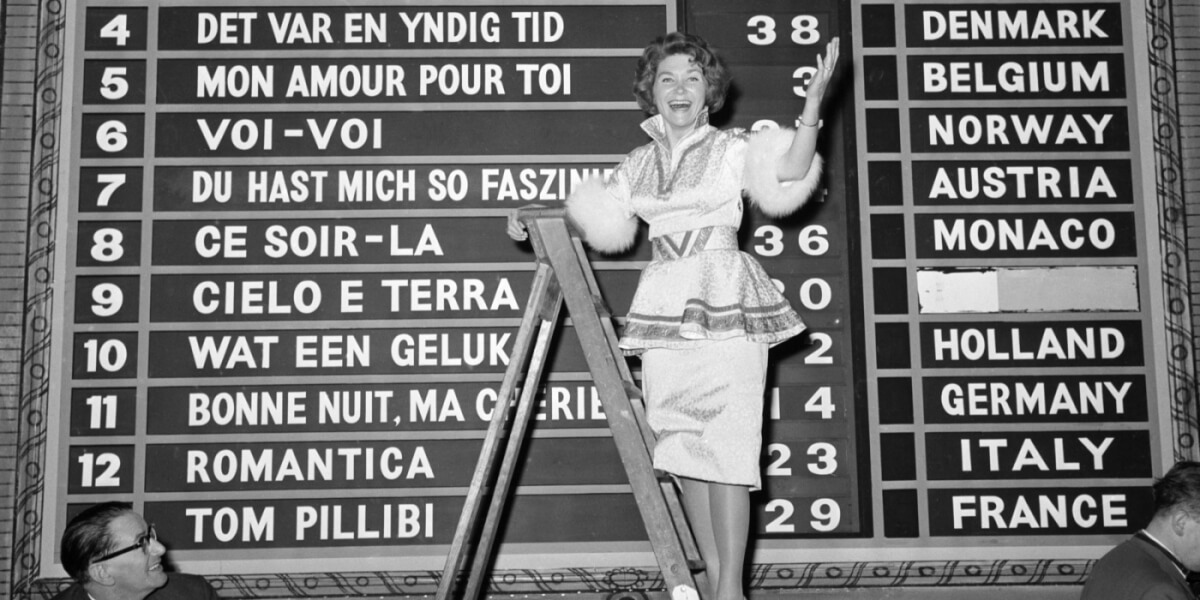
Eurovision voting rules
Since the first Eurovision Song Contest was held in 1956 the voting system and rules have been continuously changed. We'll take you on a tour back in Eurovision history with all the changes in the voting system
Since the first Eurovision Song Contest in 1956 the voting system and rules have been continuously changed. The longest period without changes in the voting system was in 1975 - 1996, where the famous 12-points-system made the "Douze points" iconic.
Did you know that Australia would have won Eurovision 2016 if the voting system wasn't changed from 2015? Or that Sweden's Carola wouldn't have won the contest in 1991, if the tie-break rules from today was active in 1991?
1956 | 1 to 10 |
| Jury voting. Each participating country had 2 jury members, and each jury member awarded between 1 and 10 points point to each song. The voting has never been made public. | |
1957 - 1961 | 1 to 10 |
| Jury voting. Each participating country had 10 jury members, and each jury member awarded one point to one song. | |
1962 | 123 |
| Jury voting. Each participating country had 10 jury members. Each jury awarded 1, 2 and 3 points. | |
1963 | 12345 |
| Jury voting. Each participating country had 20 jury members. Each jury awarded 1, 2, 3, 4 and 5 points. | |
1964 - 1966 | 135 |
| Jury voting. Each participating country had 10 jury members. Each jury awarded 1, 3 and 5 points. | |
1967 - 1970 | 1 to 10 |
| Jury voting. Each participating country had 10 jury members, and each jury member awarded one point to one song. | |
1971 - 1973 | 2 to 10 |
| Jury voting. Each country had two jury members (placed in the backstage area of the theatre, watching the show on TV), and each jury member awarded 1 to 5 points for each song. | |
1974 | 1 to 10 |
| Jury voting. Each participating country had 10 jury members, and each jury member awarded one point to one song. | |
1975 - 2015 | 123456781012 |
1975 - 1996
Jury voting. Each participating country had at least 11 jury members (later rising to 16). Each jury awarded 1,2,3,4,5,6,7,8,10,12 points.
1997
Like previous years, except 5 countries used televoting (Austria, Germany, Sweden, Switzerland and UK).
1998 - 2000
Televoting. Each participating country should use televoting.
2001 - 2002
Televoting or 50/50 tele/jury. Each participating country had the choice between 100% televoting or 50% televoting and 50% jury voting.
2003 - 2008
Televoting. Each participating country should use televoting.
2009 - 2012
50/50 tele/jury. Each participating country used 50% televoting combined with 50% jury voting from a five-member jury. The televoting were calculated to 1-8, 10 and 12 points, and the jury voting were calculated to 1-8, 10 and 12 points. The tele and jury points were then combined, and the top-ten songs were awarded with 1,2,3,4,5,6,7,8,10,12 points from each country.
2013 - 2015
50/50 tele/jury. Each participating country used 50% televoting combined with 50% jury voting from a five-member jury. The televoting and jury voting ranked all the countries (not just the top 10). The tele and jury points were combined, and the top-ten songs were awarded with 1,2,3,4,5,6,7,8,10,12 points from each country.
2016 - 2022 | 123456781012 123456781012 |
2016 - 2017
Jury and televoting. Each five-member jury ranked the songs and the top-ten songs (linear method) got 1-8, 10 and 12 points. The televoters from each country ranked the songs and the top-ten songs got 1-8, 10 and 12 points.
2018 - 2022
Same as previous two years except the jury member's individual rankings were combined using the "exponential method" (higher weights to higher ranked songs).
2023 - 2024 | 123456781012 123456781012 |
Semi-finals
Viewers from each of the participating countries could vote in their respective semi-final. Viewers in non-participating countries could vote online in both semi-finals and had same weight as one country. Each country and "rest of the world" gave 1-8, 10 and 12 points
Final
Viewers from each of the participating countries along with online voting from "Rest of the world" (same weight as one country) each gave 1-8, 10 and 12 points. Each five-member jury ranked the songs and the top-ten songs (exponential method) got 1-8, 10 and 12 points.
Tie between two or more songs
1956 - 1969:
If two or more songs gained the same points, they would share the position. In 1969 there were four winners!
1970 - 1988:
If two or more songs shared the first place with the same points, each of these songs should be performed again, and a second voting would take place, where each jury should vote for one of the final songs. If two or more songs tie but not for first place, they would share the position.
1989 - 2007:
If two or more songs shared the first place with the same points (as it happened in 1991), the best of these songs was the song which received the highest number of 12-point scores, then the highest number of 10-point scores, 8-points scores, etc. If still tied, both countries would be declared joint winners. If two or more songs tie but not for first place, they would share the position.
2008 - 2015:
If two or more songs gained the same points, the best of these songs was the song which:
- Has obtained points from the highest number of countries
- Received the highest number of 12-point scores, then the highest number of 10-point scores, 8-points scores, etc.
- The song which was earlier in the running order
2016 - 2019:
If two or more songs gained the same points, the best of these songs was the song which:
- Has received the most points from all the Televoters combined
- Has obtained points from the highest number of countries (televoting)
- Received the highest number of 12-point scores, then the highest number of 10-point scores, 8-points scores, etc. (televoting)
- The song which was earlier in the running order
2021 - 2022:
If two or more songs gained the same points, the best of these songs was the song which:
- Has received the most points from all the Televoters combined
- Has obtained points from the highest number of countries (combined televoting and jury)
- Received the highest number of 12-point scores, then the highest number of 10-point scores, 8-points scores, etc. (combined televoting and jury)
- The song which was earlier in the running order
2023 - 2024:
If two or more songs gained the same points, the best of these songs was the song which:
- Has obtained the highest rank from all the national audiences and "Rest of the world"
Presentation of the voting and points
1956:
The scores of the voting have never been made public, leaving room for lots of speculation. Attempts to reconstruct the voting by interviewing jury members over the following five decades did not lead to any reliable outcome.
1957 - 2005:
Each country presented all their votes orally.
2006 - 2015:
The points were presented individually from each country (1-7 shown on screen. 8, 10 and 12 orally).
2016 - 2024:
First the jury points were presented individually from each country (1-10 shown on screen. 12 orally). After that the results of all the televoting from all the countries were bundled and given combined.
50/50 Tele/jury ranking
2009 - 2015:
If there was a tie between two or more songs in a country, when the combined calculation between televotes and jury votes, the song which obtained the most votes from the televotes would be ranked highest.
Televoting or jury failure
2004 - 2008:
If a televoting failure occured in the country or if a country wasn't big enough to provide a valid televoting result, a backup eight-member jury was used instead by the country.
2009 - 2015:
If a televoting failure occured in the country, if a country wasn't big enough to provide a valid televoting result, or if the country's televoting result wasn't approved, only a jury was used by that country. If a jury failure occured in the country or if the country's jury result wasn't approved, only televoting was used by that country.
2016 - 2022:
If a country wasn't big enough or if a country couldn't deliver a valid televoting result, the televotes would be made up by a "substitute result" calculated by a pre-selected group of countries. If a jury failure occured in the country or if the country's jury result wasn't approved, a "substitute result" calculated by a pre-selected group of countries was used instead, as it happened to six countries in 2022.
2023 - 2024:
If a country wasn't big enough or if a country couldn't deliver a valid televoting result, the country's jury votes was used instead of televoting. In the final, if a jury failure occured in the country or if the country's jury result wasn't approved, the points awarded from the televoting in that country were doubled and used as a substitute. If there was neither a valid televote or jury vote in a country, a "substitute result" calculated by a pre-selected group of countries was used instead.








